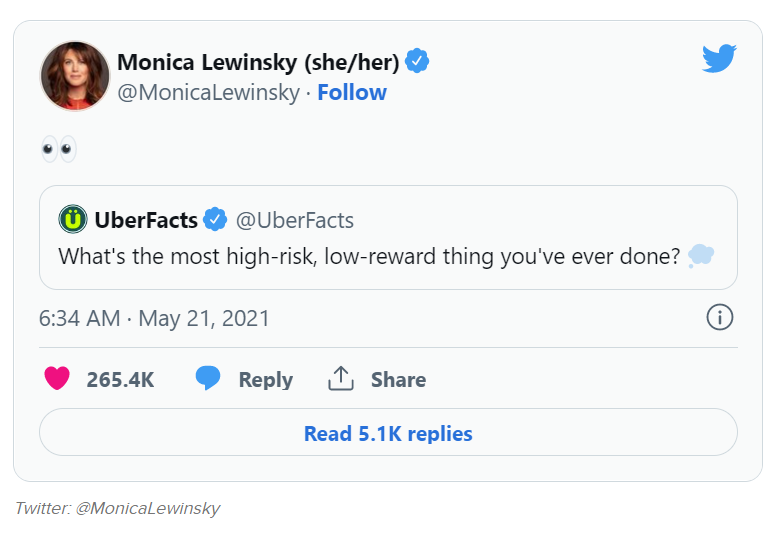Evolution in social media
Contents
11.3. Evolution in social media#
Let’s now turn to social media and look at how evolution happens there.
As we said before, evolution occurs when there is: replication (with inheritance), variations or mutations, and natural selection, so let’s look at each of those.
11.3.1. Replication (With Inheritance)#
For social media content, replications means that the content (or a copy or modified version) get seen by more people. Additionally, when a modified version gets distributed, future replications of that version will include the modification (a.k.a., inheritance).
There are ways of duplicating that are built into social media platforms:
Actions such as: liking, reposting, replying, and paid promotion get the original posting to show up for users more
Actions like quote tweeting, or the TikTok Duet feature let people see the original content, but modified with new context.
Social media sites also provide ways of embedding posts in other places, like in news articles
There are also ways of replicating social media content that aren’t directly built in to the social media platform, such as:
copying images or text and reposting them yourself
taking screenshots, and cross-posting to different sites
11.3.2. Variations / Mutations#
When content is replicated on social media, it may be modified. The Social media system might have built in ways to do this, like a quote tweet or reply adds some sort of comment to the original post, effectively making a new version of the post that can spread around.

Fig. 11.5 Monica Lewinsky posted this quote tweet that answers a question with a side-eye emoji, which her audiences will understand as referring to her affair with then-US-president Bill Clinton.#
Through quote tweeting, a modified version of the original tweet (now with Lewinsky’s emoji response) spread as people liked, retweeted, replied, and put it in Buzzfeed lists
Additionally, content can be copied by being screenshotted, or photoshopped. Text and images can be copied and reposted with modifications (like a poem about plums). And content in one form can be used to make new content in completely new forms, like this “Internet Drama” song whose lyrics are from messages sent back and forth between two people in a Facebook Marketplace:
@lubalin that escalated quickly... #sodramatic #humor #oldpeoplefacebook #boomer #musician #producer ♬ original sound - Lubalin
11.3.3. Natural Selection#
When content (and modified copies of content) is in a position to be replicated, there are factors that determine whether it gets selected for replicated or not. As humans look at the content they see on social media they decide whether they want to replicated it for some reason, such as:
“that’s funny, so I’ll retweet it”
“that’s horrible, so I’ll respond with an angry face emoji”
“reposting this will make me look smart”
“I am inspired to use part of this to make a different thing”
Groups and organizations make their own decisions on what social media content to replicate as well (e.g., a news organization might find a social media post newsworthy, so they write articles about it).
The above ways of social media content selection for replication can be considered natural selection in that they are being replicated according to human interest in the content itself.
There are also other ways that social media content get replicated that could be called unnatural selection, where something else is driving the replication of social media content. This includes things like:
Paid promotion and ads, where someone pays money to have their content replicated
Astroturfing: where crowds, often of bots, are paid to replicated social media content (e.g., like, retweet)
Finally, the social media platforms use algorithms and design layouts which determine what posts people see. There are various rules and designs social media sites can use, and they can amplify the natural selection and unnatural selection in various ways. Our next chapter, Recommendation Algorithms, will go into this more.
